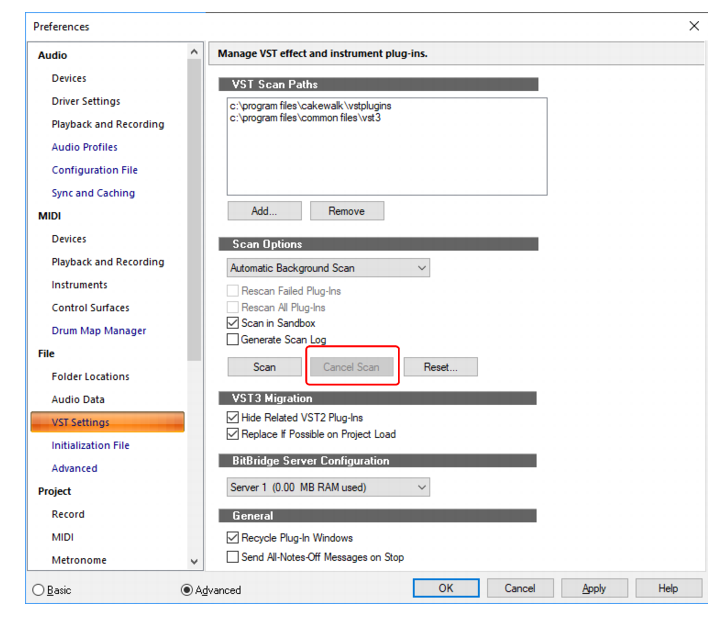Sonar automatically scans your VST folders for new plug-ins on startup, registering any unscanned VST plug-ins so that they become available in Sonar’s plug-in menus. You can turn off automatic scanning in Edit > Preferences > File - VST Settings by clearing the Scan For VST Plug-ins On Startup check box.There are two places you can configure your VST plug-ins manually: go to Edit > Preferences > File - VST Settings or use the Cakewalk Plug-in Manager (Utilities > Cakewalk Plug-in Manager). You can use Edit > Preferences > File - VST Settings to set general VST options, such as choosing which folders to scan, but not specific options on individual plug-ins. Use the Cakewalk Plug-in Manager to set options on individual plug-ins (use the Utilities > Cakewalk Plug-in Manager command to open the Plug-in Manager). The following procedures explain how to use the settings in Edit > Preferences > File - VST Settings. The Cakewalk Plug-in Manager has its own help.















Tip - Searching Documentation
Tip: To search for a specific topic, type your search query in the Search Cakewalk.com field at the top right of this page.
When the search results appear, click which product's documentation you would like to search to filter the search results further.
Note - Using Offline Help
Note: If you prefer to always use offline Help, go to Edit > Preferences > File > Advanced in your Cakewalk software and select Always Use Offline Help.
If you are not connected to the internet, your Cakewalk software will default to showing offline help until an internet connection becomes available.






